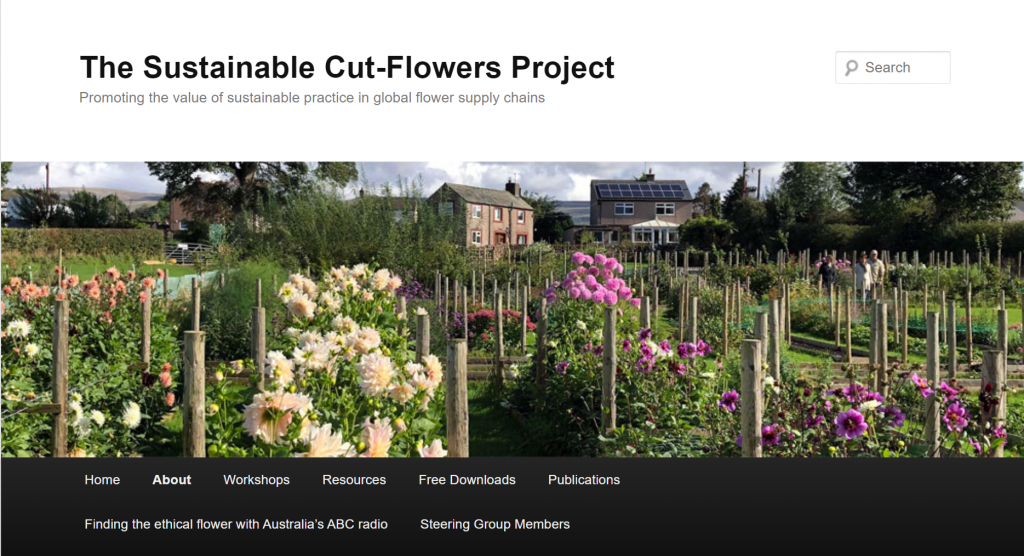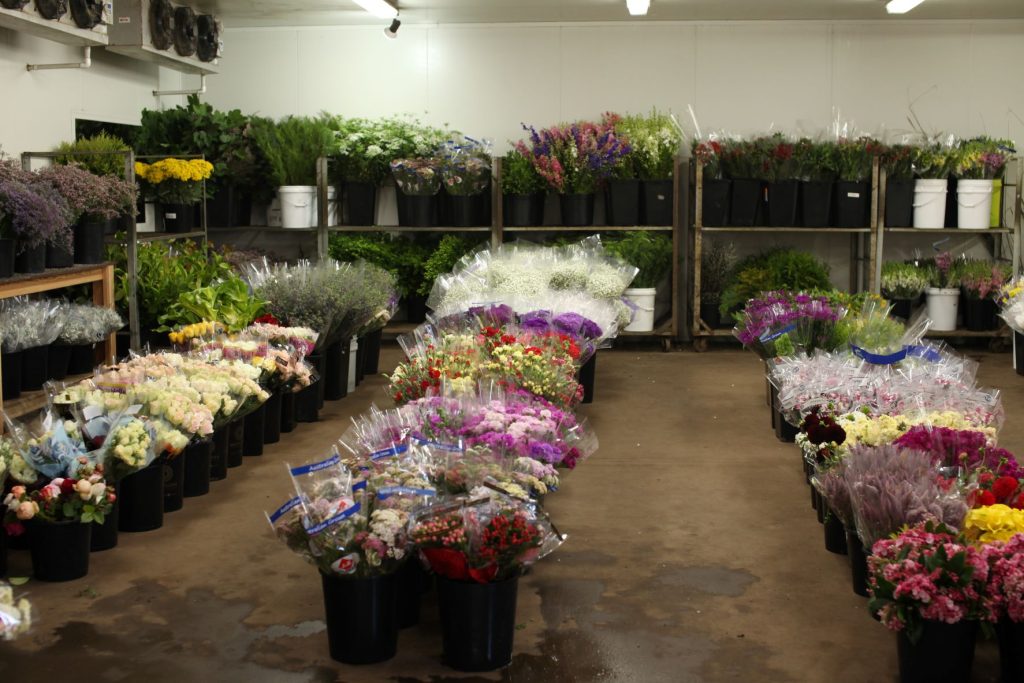The Sustainable Cut Flowers Project
A small team of researchers in the United Kingdom have been researching the cut-flower industry for over a decade.
Led by Professor David Bek, from Coventry University, and Dr Jill Timms from Surrey University UK, the Sustainable Cut Flowers Project has been investigating the key question: ‘What does a sustainable flower look like?’
The research focus
To better understand what makes a more sustainable cut flower, the researchers have visited farms, packhouses and retail outlets in locations as diverse as Naivasha, Aalsmeer, Lancashire and Cape Town. They have also interviewed florists up and down the United Kingdom and attended international flower events, such as the Royal Flora Holland Trade Fair.
The group have also staged multiple workshops, which have enabled them to build an active Stakeholder Group drawn from across different parts of the cut-flower industry.
Their project is very timely for those working with flowers, for consumers and wider society, as it is tackles questions about what sustainability means in practice. Ultimately, this will support the cut-flower industry to flourish in the context of acute environmental, social and political challenges.
The team have a website and guide for understanding the complicated business of growing flowers and what can be done to move towards a more sustainable growing sector.

Local and seasonal to minimise environmental impact
The work of Prof. Bek and Dr Timms is used as a reference point for the development of the SFN’s first principle for florists — Choose better flowers— when selecting flowers for retail sale, planning events or contemplating designs.
As with most ideas about sustainability, each subject exists on a sliding scale from most sustainable to least. And as with ideas about growing food sustainably, local and seasonal growing is often the starting point because, as Bek says, “’local and seasonal’ is a proxy for minimal input/resource-use production”.
From economic and social perspectives, buying locally produced is associated with benefits to the local economy and enhancing a sense of community identity and belonging for those associated with an enterprise.
However, as Bek points out, ‘localness’ does not necessarily mean that production systems are using lower input approaches.
“People tend to think of small-scale production as being undertaken by growers who are committed to the ideals of sustainability. But we should be wary of making the assumption that because something is grown locally, that it is low impact.”
“Seasonality is especially important as a driver of lower impacts, as less inputs are needed for production. Lower inputs, whether chemicals, water or power, mean lower environmental impacts. Serving local markets means that transport needs are lower therefore less carbon energy is required. All things being equal, ‘local/seasonal’ flowers will generate minimal negative impacts and may even have net beneficial impacts through promotion of biodiversity and carbon sequestration.”
“From a sustainability point of view, it would, of course, be best to manage without infrastructure such as polytunnels and greenhouses, but we have to be realistic. The key thing is to try to use sustainable materials wherever possible and to use materials that will last a long time, so they do not need replacing in the near future. And to avoid artificial heating if at all possible, unless renewably sourced.”
Seasonality is especially important as a driver of lower impacts, as less inputs are needed for production. Lower inputs, whether chemicals, water or power, mean lower environmental impacts. Serving local markets means that transport needs are lower, therefore less carbon energy is required.
❝ — Prof David Bek
Asking questions for more sustainable choices
The concept of ‘local’ is another tricky one. For florists located a long way from areas of commercial production, Bek says the key thing is to try and control the variables that you can and for florists to ask questions of producers.
“Questions can be asked about the logistics operations – are the transport systems being used by the wholesalers operating according to best practice sustainability standards? Is every effort being made to reduce the carbon footprint? What sustainability standards are flower growers working towards in their production systems? Do they have policies to reduce carbon footprints and plastic usage for example? Do, they comply with certifications? What growing media do they use? If the florist is buying wild-grown flowers, then are these being harvested according to conservation legislation?”

Dr Bek says the key thing is to try and control the variables that you can and for florists to ask questions of producers.
Certifications
“In general terms, it is beneficial to procure flowers that are certified in some way. Certifications are no panacea, but they are a start. That said, smaller operations who may well operate in a very sustainable fashion are unlikely to have expensive certifications. Imported flowers are not necessarily off-limits as there are broader sustainability benefits to supporting producers across the globe. But certainly, look for certifications for imports (preferably Fairtrade or similar) and preferably shipped rather than flown. The key thing is to be alert and ask questions of suppliers.”
Prof Bek acknowledges that it is pretty much impossible for any individual florist to police all of these issues themselves. “What I think is very important is for industry bodies and associations to work together, gathering information and engaging in discussion and debates with different stakeholders. Best practices can then be agreed and pursued.”
Issues related to sustainability are complex
“It is also critically important to recognise that the issues are complex and that there are few ‘easy’ answers to most of the questions, and that knowledge is evolving all the time. The pathway to sustainability is very much a journey and the practices we will recognise as ‘best in class’ in ten years’ time will no doubt be different to now. And this is fine! The critical thing is to embark on the journey and be committed to the core principles of reducing negative impacts and promoting positive impacts. An open-minded approach is important. Throwing mud around does not actually shift the dial or create a fertile environment for constructive debate. Equally, we all have to be alert to the fact that there will be opportunists trying to market products as sustainable when they are anything but.”
SFN and the Sustainable Cut Flowers Project
The SFN has joined the Sustainable Cut Flower Project’s stakeholder group and is grateful to both Prof. David Bek and Dr Jill Timms for their contribution to the SFN’s Foundation in Sustainable Floristry course.